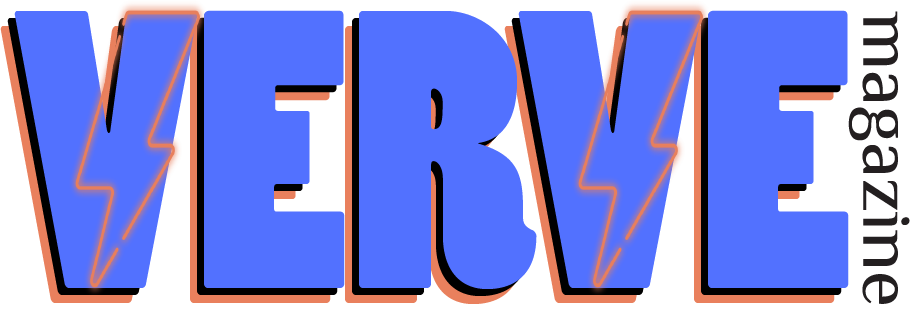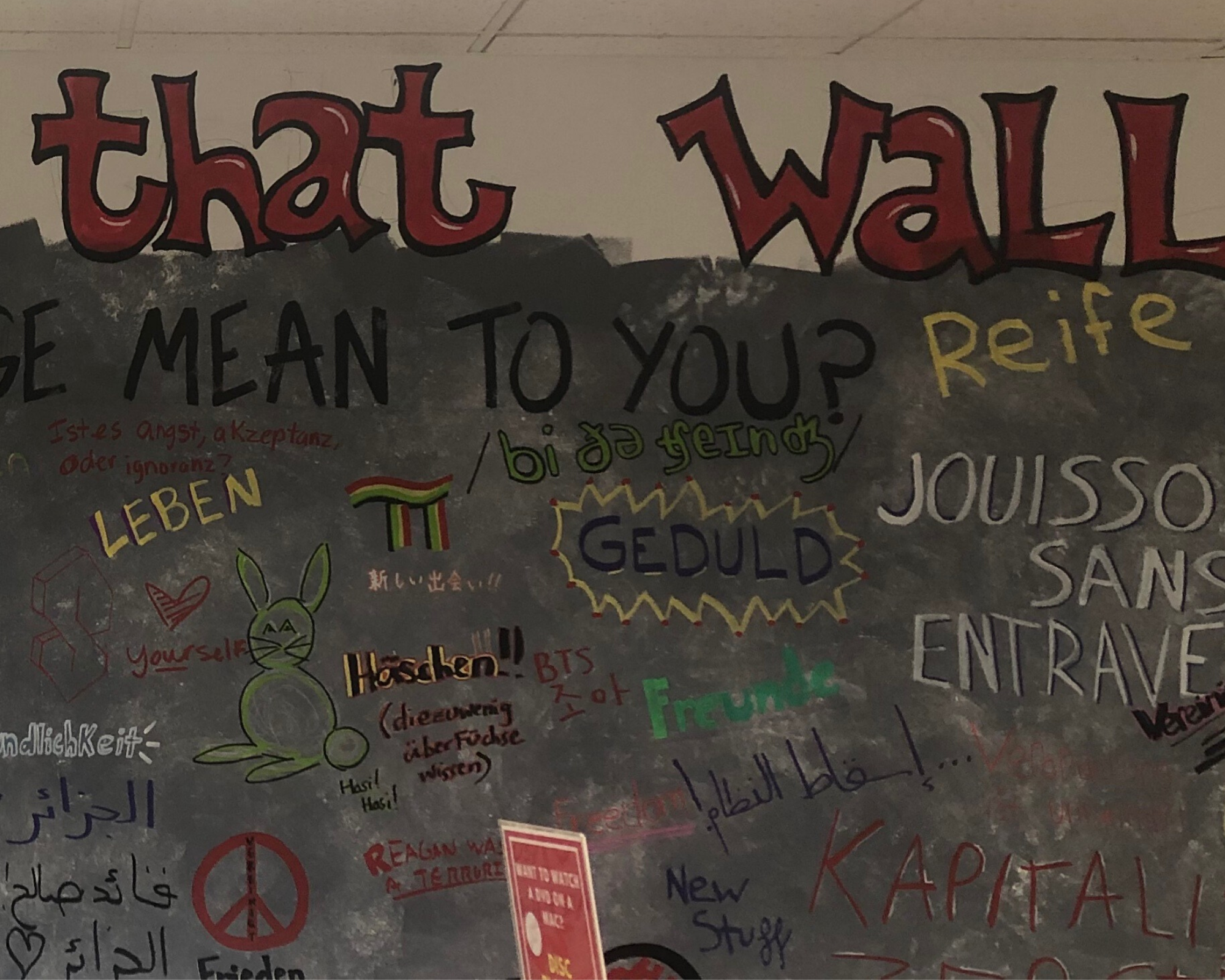30 years ago, November 1989. On the evening of November 9th, an East German government official gave an unexpected announcement over live television: the travel restrictions which had kept citizens from leaving the German Democratic Republic or GDR—a satellite state of the Soviet Union—were lifted. The ability to freely travel outside of the GDR had not been allowed for about 28 years, and crowds of East Berliners stormed the border crossings in response, essentially pushing through the Wall that had separated East and West Berlin since 1961. It was a moment that many people had believed would never happen, and an answer to the preceding weeks of peaceful demonstrations in which thousands of GDR citizens had gathered to show their dissatisfaction with the socialist government, protesting for the freedom to not only travel, but to also elect a democratic government. While complete reunification of East and West Germany would take time to reestablish, the Fall of the Wall incited intense, fast-paced change for the German people and other countries connected to the Soviet Union at the time.

The Fall of the Berlin Wall represents a triumphant moment of unity and reunification for Germany and the wider world, but it also represents the many changes that East Germans in particular experienced—changes that began to happen with increased speed after the initial destruction of the Wall. In the weeks and months that followed, exciting changes arose, like the ability to travel freely outside of East Germany, and the ability to choose from a suddenly endless selection of products—from tropical fruits to new clothing styles—which had previously been unavailable in their supermarkets and stores. There were also changes that necessitated a longer transition time, like no longer having guaranteed work or subsidized prices on rent and groceries. While change meant new opportunities, it also meant growing reaccustomed to the sheer amount of choices and decisions to consider.
While this historical event might seem distant in time and place from our current moment here in Iowa City, these questions of unity and change remain constant. In order to reflect on these themes and commemorate the 30th Anniversary of the Fall of the Berlin Wall this year, the University of Iowa’s German Department and the Phillips Hall Language Media Center (LMC) have established an intercultural exhibit that started on November 6th and will run until the end of the fall semester. When you walk into Phillips Hall on Clinton Street across from the Pentacrest, you’ll meet this sign in the entranceway:

This poster is modeled after the signs that alerted people in the American sector of West Germany that they were about to move between
“What Does Change Mean to You?”
The exhibit in the Phillips Hall LMC asks visitors to reflect on the effects of this historical event and the idea of change in their own language. “The Fall of the Wall is a celebration of unity,” explains Dr. Kirsten Kumpf Baele, professor in the German Department and organizer of the “Tear Down That Wall” exhibit. “Most languages were affected by the Berlin Wall; it is not just a German event and its effects go beyond that.”
The goal of the LMC exhibit is to not only provide context for an important historical moment but, Dr. Kumpf Baele says, “to provide a way for all of the different languages in the building to come together and celebrate one another.” In addition to the exhibit unifying those visitors who study different languages, it also provides an opportunity for people of all different levels and positions to interact, from students to faculty to professors.
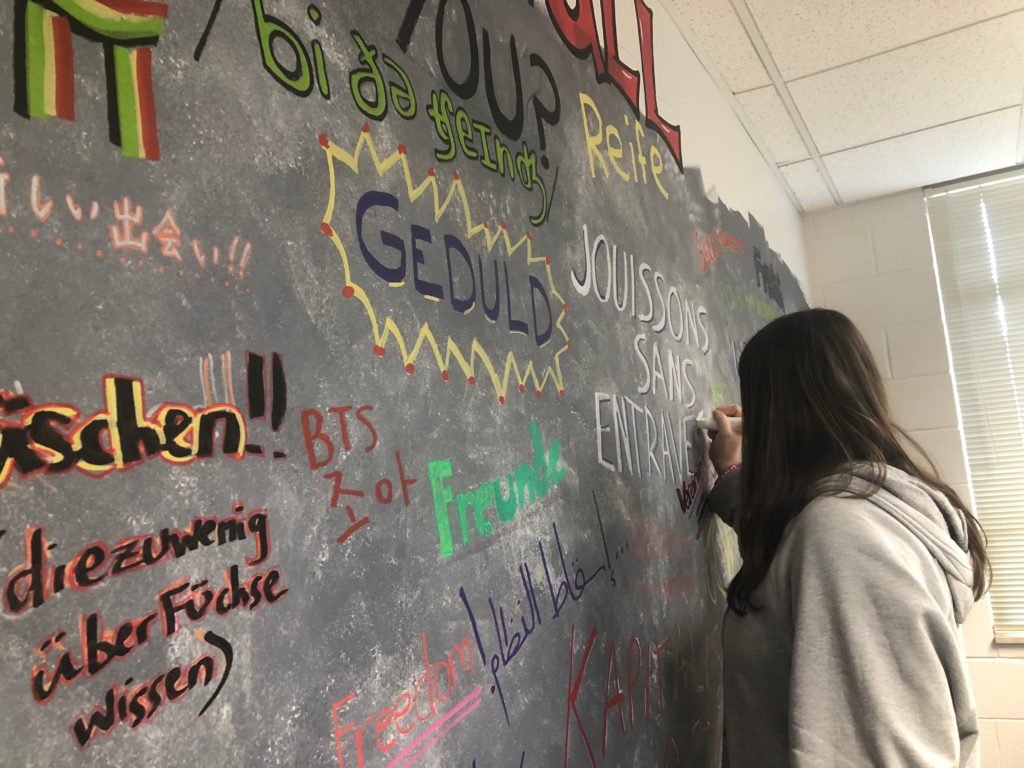
Claire Frances, the Instructional Services Manager of the LMC, painted the background for the “wall” and strongly supported the German Department’s idea to have students interact and reflect on the event. Having been 22 years old at the time of the Fall of the Wall and traveling in Europe, Claire Frances recognized that it was a “life-changing event for the world.”
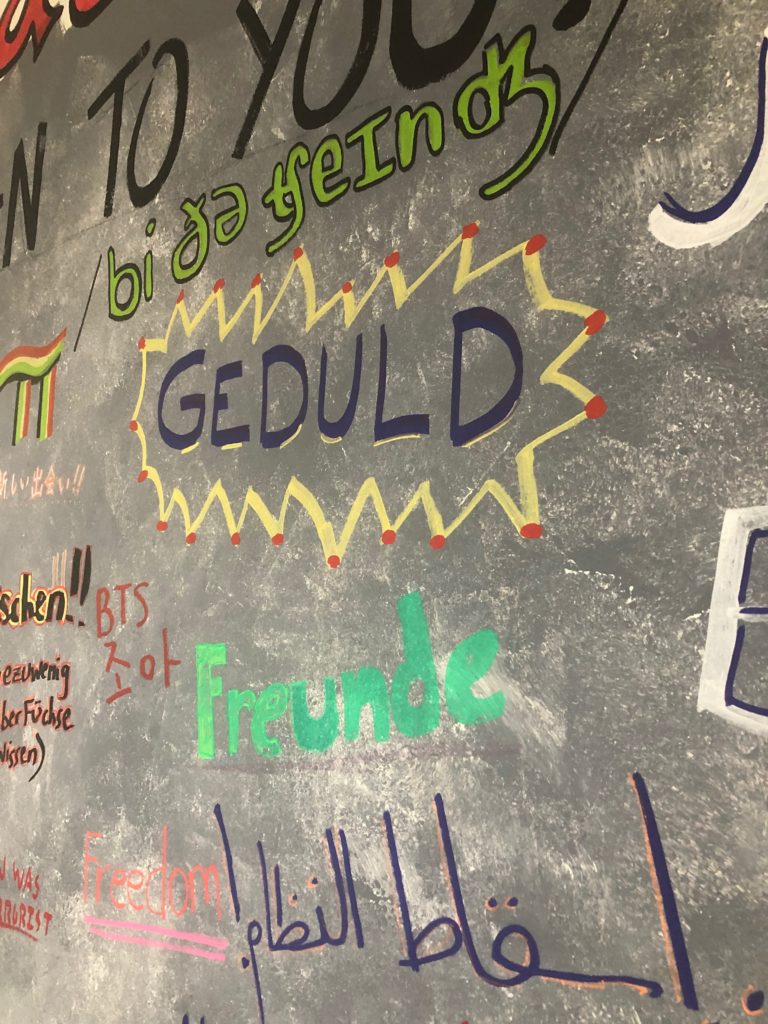
The “Tear Down That Wall” exhibit is just the first of many events that she plans to host in the LMC, as she transforms the space into a “center for culture and language learning and a place where all cultures are celebrated,” rather than a strictly quiet workspace. As a result, almost all of the languages in the Division of World Languages are represented in the exhibit’s graffiti, including American Sign Language, Arabic, Chinese, French, German, Italian, Japanese, Spanish, and Russian.
Like the West Berliners who graffitied the historical Berlin Wall, Frances says that it is important for visitors to be able to interact with the event in a similar way, reflecting through word and visual art. “There’s a feeling that it’s forbidden to write on walls,” she says. “Inviting people to do something that is “verboten” [German for forbidden] gives the feeling of liberation. It gives the feeling of turning the world upside down.” In her graffiti contribution, Frances shared in French the sentiment that “change can be scary, change can be transformative.”
In her contribution to the “Tear Down That Wall” exhibit, Dr. Kumpf Baele wrote the German word “Geduld” or “patience.” “If you want change to happen then you have to be patient as well. You realize it may come slower than you think, but that doesn’t mean that it won’t happen.”
Students and other faculty members have shared similar reactions and reflections on the event:

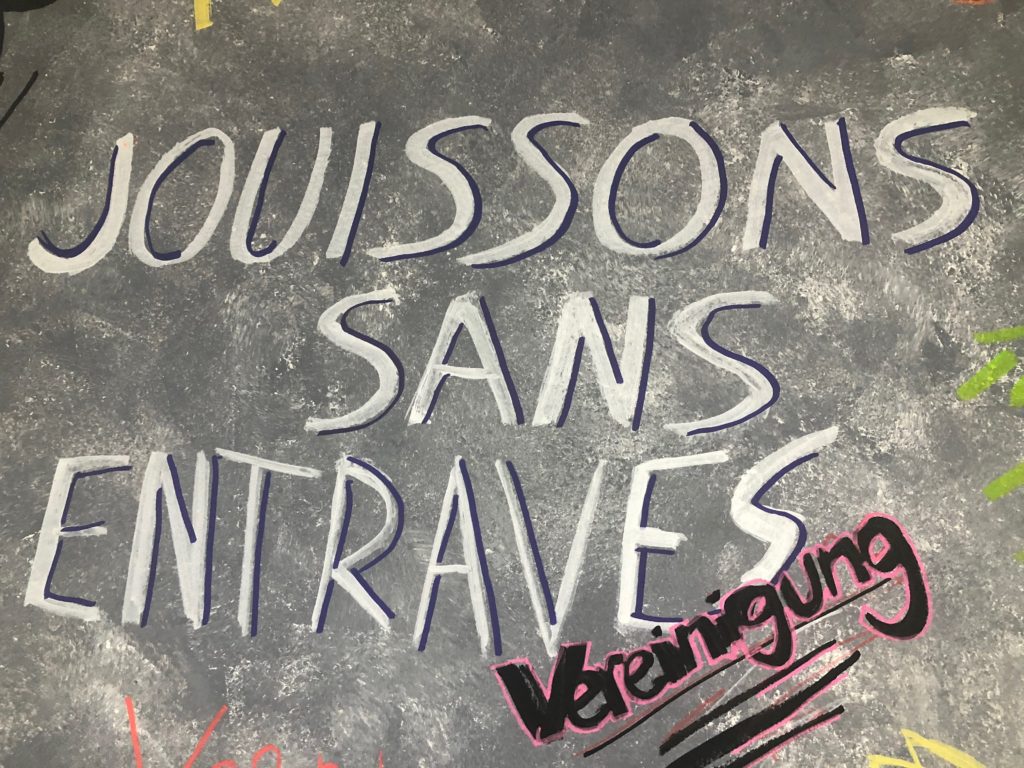
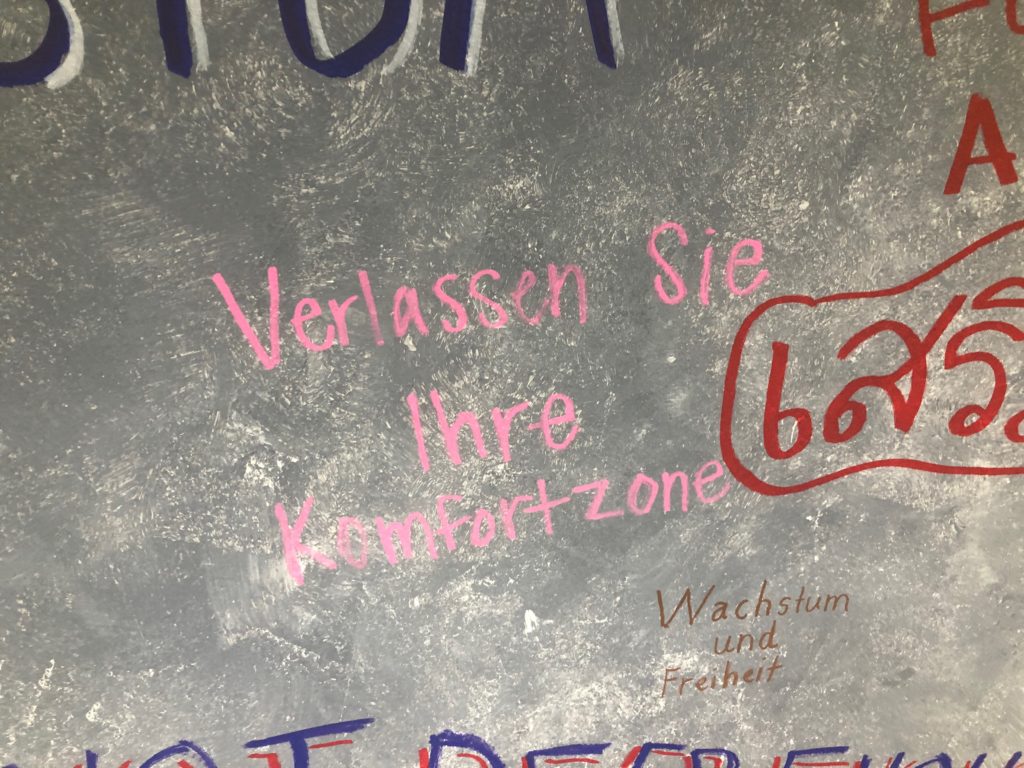

Spanish: “No Prisons of Borders Or States”
As the history connected to the Fall of the Berlin Wall and its aftermath show, changes are not always easy and don’t always come as quickly as we might hope. However, as UI visitors’ reactions to the event and exhibit show, changes promise newness. Ultimately, they promise an opportunity to bring us together and gain a better understanding of each other’s perspectives. “In a small way, this activity has imparted change right here in our Division,” Dr. Kirsten Kumpf Baele concludes while considering the exhibit’s continual progress. “We have come together, shared stores, communicated about a common idea, and in sum, celebrated diversity and inclusion.”
Before the end of the semester, consider stopping by the Phillips Hall LMC to learn more about the history of the Berlin Wall and engage in this intercultural moment. Interact with other’s contributions to the graffiti wall and include your own reflection: “What Does Change Mean To You?”

